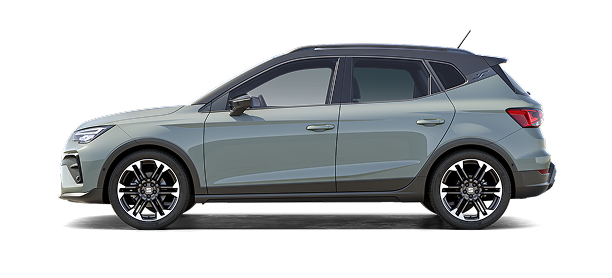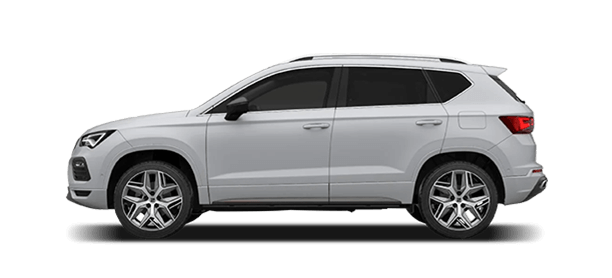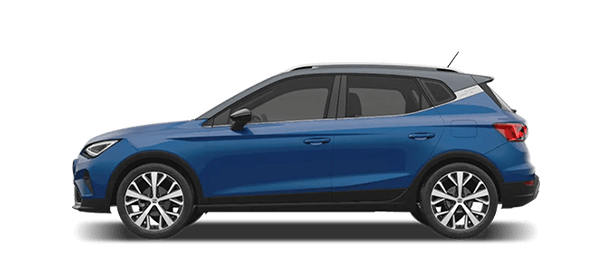More and more cars are incorporating elements of comfort and infotainment for their occupants. Ergonomic seats, eye-level console... everything contributes to a better driving experience. But there are other invisible elements that are gaining in prominence: advanced driving assistance systems (ADAS). These are automatic assistants that make driving safer while making everyday traffic situations easier. This is the case of the new SEAT Ateca 2020, with enhancements that make it one of the safest cars in its segment. According to a report by the European Commission, its incorporation can save more than 10,500 lives between 2020 and 2030. With them, the new SEAT Ateca 2020 has been strengthened to become one of the safest vehicles in its segment.
Safety at the wheel.
According to the 2018 European Road Safety Observatory (ERSO), between 40% and 60% of drivers in the European Union exceed speed limits. It has been shown that by reducing speed slightly, the severity of road accidents also decreases. Considering that most of them are caused by human factors, small things like anticipating a reduction in speed can make a difference. For this reason, driver assistance systems are a key factor in driving safety.
Carefree driving.
In order to drive properly, it is necessary to adapt your speed to the limits of the road and traffic conditions. The Travel Assist on the new Ateca was created to make this easier. You can activate this function at the press of a button, which guides the car within the lane, maintains a safe cruising speed with the traffic ahead and, combined with predictive ACC, anticipates the route of the road and regulates the speed from the recognition of signs. “It’s a system that provides a lot of comfort because it can assist driving at high speeds while keeping the car in its lane” points out Marc Seguer, head of ADAS at SEAT. Even so, to preserve safety and legality, the driver must monitor the system, keep their eyes on the road and keep both hand on the wheel at all times.
A house on wheels.
Caravans are growing in popularity in Europe. In 2019, there were 26,941 new caravan registrations in countries such as Germany, according to the European Caravan Federation, and the figure is increasing this 2020: in June, Germany posted 3,572 new registrations, up 20% from the same month last year. According to Johannes Fleck, Head of Product, Planning and Strategy at SEAT Germany, “drivers are increasingly discovering the possibilities offered by caravans and the SEAT Ateca is an ideal car for large trailers. Still, a lot of experience and skill is required, especially when maneuvering backwards. If we turn to the left, the caravan moves in the opposite direction ”. The Trailer Assist system on the Ateca 2020 offers extra help in these cases in just three steps: select reverse gear, press the parking aid button and by looking at the rear camera display, adjust the mirror to the side where you are headed.
Accident prevention.
Drowsiness at the wheel can be fatal. To prevent these situations, the new SEAT Ateca is equipped with Emergency Assist: in case the vehicle detects that the driver does not interact with the steering wheel for a few seconds, it will first send audible and visual signals to look for a reaction and even make a braking attempt. If there is still no response, the assistant will turn on the turn signals and slow down until the car stops without exiting the lane. "More and more assistants are needed to not only warn drivers of dangerous situations, but even take active control of the vehicle to correct any abnormal behavior", says Mario Arnaldo Fernández, Associated European Motorists (Automovilistas Europeos Asociados) president.
Collision protection.
When an impending accident is unavoidable, the most important thing is to ensure that the vehicle’s occupants are protected. For this purpose, the Pre-crash Assist was created for the new Ateca. In face of a potential risk of collision, the on-board systems work together and prepare the vehicle for a hypothetical impact: “It activates the emergency lights, tightens the reversible seat belts and closes the windows to mitigate the consequences of an accident”, explains Seguer.
The future: autonomous cars?
These assistants lay the foundation for what will one day be the autonomous car. For the moment, they focus on meeting the needs of the driver: “We work with a progressive flow following the driver’s mindset from the time they get in to the moment they get out of the car, in order to find the best way to assist them throughout the driving process”, says Seguer. In the future, it is expected that drivers won’t have to pay attention to driving or even be present at all; the car will be its own driver. “It’s clear that drivers make mistakes that technology is able to minimise, so the development of the autonomous car is unstoppable”, concludes Seguer.
















